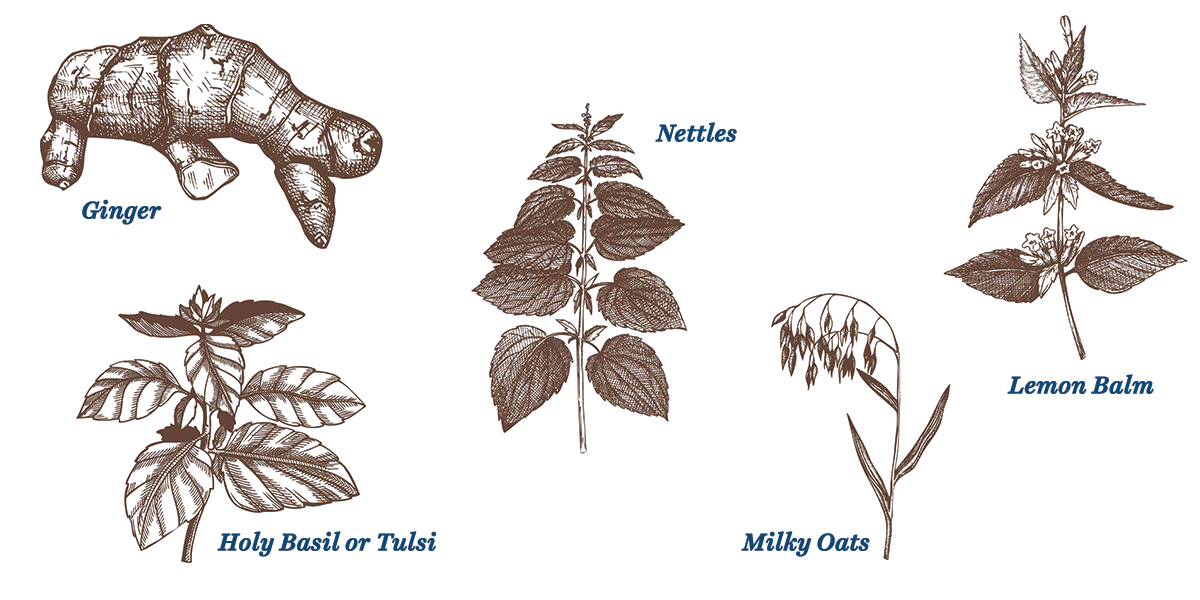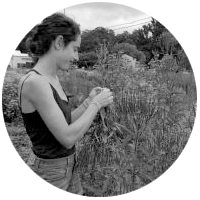Susan Pincus ’08 on enjoying herbal infusions

Many of us are familiar with herbal teas from drinking store-bought tea bags filled with herbs like chamomile or mint. Tea bags are great, but there is so much more to the herbal world: a vast resource of potential plant allies that can be used to customize an herbal infusion to meet your own needs and tastes.
An herbal infusion is the process of steeping herbs in very hot water. Steeping helps pull out the desirable parts of the plant, flavoring the water and offering benefits like increased energy or balance.
As you practice making infusions, you can customize them by expanding your herbal pantry and playing with quantities and steeping times. I customize my blends every day depending on the season and my mood and energy levels.
Start simple
Make infusions of just one herb so you can get to know each plant better on its own. The following herbs are great on their own or when combined:
Ginger:
Warming and excellent for digestive support. Ginger can be purchased fresh and grated into infusions.
Holy Basil (also known as Tulsi):
All-around nervous system support, including for mental clarity and focus.
Lemon Balm:
Calming to the nervous and digestive systems.
Milky Oats:
One of the best nutritive tonics for the nervous system.
Nettles:
Full of vitamins and minerals and useful as a tonic tea to help restore energy.
Favorite winter combos:
Mineral-rich blend: Nettles, Milky Oats and Holy Basil
Post-dinner digestive blend:
Ginger and Lemon Balm
Acquire the supplies and ingredients
You’ll need any vessel that can hold hot water (pot, glass jar, French press, etc.), a way to heat water and a strainer.
I make tea infusions with fresh or dried herbs, but during the winter only dried are available to me. If you have a garden it’s easy to dry your own herbs, but you can also purchase high-quality organic dried herbs from local growers, at health food stores or online. My preference is for loose herbs that can be easily combined for special blends.
Make the tea
Put four to six tablespoons of dried herbs into a quart jar. Heat up your water until boiling, then pour the water over the herbs until they are covered (or add the herbs to the water and turn off the heat). Cover and steep for 30 to 45 minutes. Strain and drink. If you like, you can sweeten with a bit of local honey. Compost the spent herbs. Leftover infusions can be refrigerated for a day or so and then gently reheated to enjoy.
Breathe deep
As you drink your infusion, take time to notice how your body feels. Much of the magic of drinking infusions comes when you can relax for a few minutes while sipping. Notice how different infusions make you feel, and experiment with new blends as you become more confident.
—By Susan Pincus ’08
 Since 2012, Susan Pincus ’08 has been running Sawmill Herb Farm in Florence, Massachusetts, a small organic farm dedicated to providing high-quality medicinal and culinary herbs for the region with a fresh herb CSA, plant starts and apothecary items. Both on and off of the farm she works with individuals and groups through plant and nature education and workshops.
Since 2012, Susan Pincus ’08 has been running Sawmill Herb Farm in Florence, Massachusetts, a small organic farm dedicated to providing high-quality medicinal and culinary herbs for the region with a fresh herb CSA, plant starts and apothecary items. Both on and off of the farm she works with individuals and groups through plant and nature education and workshops.
This article appeared as “Enjoying Herbal Infusions” in the winter 2020 issue of the Alumnae Quarterly.
Are you a maven?
Pitch us your area of expertise at quarterly@mtholyoke.edu.
January 23, 2020










Leave a Reply